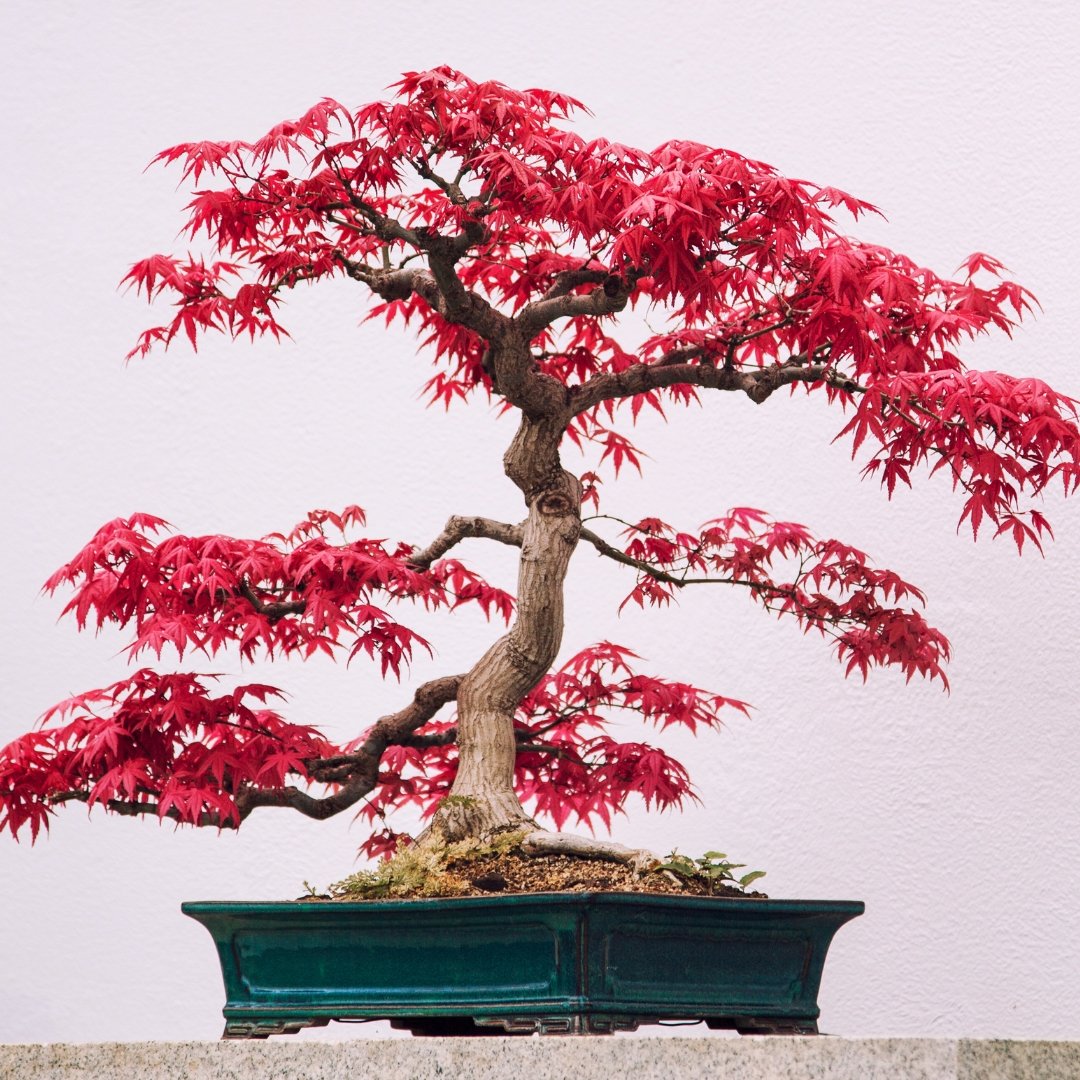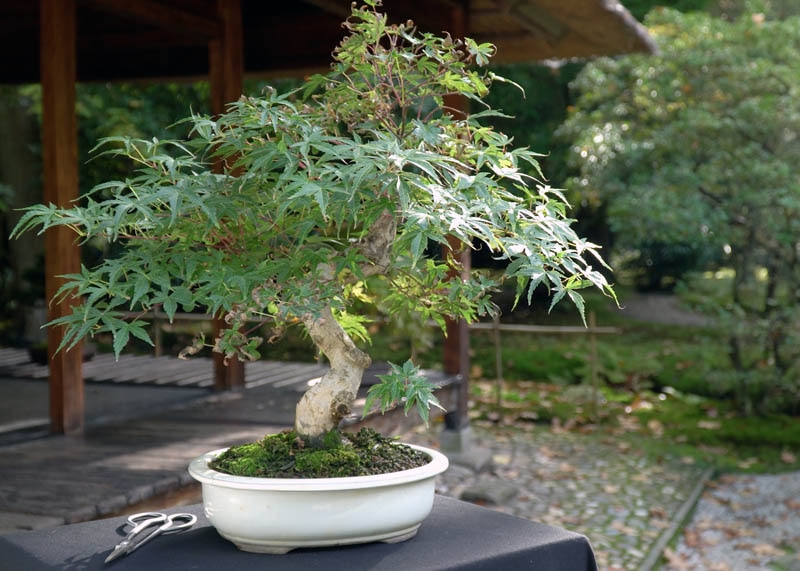Japanese Maple Bonsai trees need proper sunlight, watering, and pruning for healthy growth. They thrive in well-drained soil and partial shade.
Japanese Maple Bonsai trees, known for their vibrant foliage, are a popular choice among bonsai enthusiasts. These trees require specific care to maintain their beauty and health. Place your Japanese Maple Bonsai in a location that receives partial shade to protect it from scorching sun.
Water the tree regularly, ensuring the soil remains moist but not waterlogged. Pruning is essential to shape the tree and promote healthy growth. Use well-drained soil to prevent root rot. With proper care, your Japanese Maple Bonsai will flourish, adding a touch of elegance to your garden or indoor space.
Introduction To Japanese Maple Bonsai
Japanese Maple Bonsai trees require careful attention to thrive. Regular pruning and proper watering are essential for maintaining their health. Proper sunlight exposure ensures vibrant foliage and robust growth.
History And Significance
The Japanese Maple Bonsai is a beautiful tree. It is known for its bright red leaves. These trees come from Japan. They have been grown for hundreds of years. People love them for their elegant shape and color. Samurai and monks used to grow these trees. They believed the trees brought peace and beauty. Today, many people still enjoy them. They are a symbol of tranquility and nature’s beauty.
Popular Varieties
| Variety | Description |
|---|---|
| Acer palmatum | Known for its red leaves and graceful shape. |
| Acer japonicum | Features broad leaves and stunning fall colors. |
| Acer shirasawanum | Has bright yellow leaves that turn orange-red in fall. |

Credit: bonsai-en.shop
Ideal Growing Conditions
Japanese Maple Bonsai trees love mild climates. They thrive in temperatures between 50-85°F. Too much heat can damage them. Cold weather below 30°F can be harmful. These trees are sensitive to frost.
Japanese Maple Bonsai trees need bright, indirect sunlight. Direct sunlight can burn their leaves. They also enjoy some shade, especially in the afternoon. Too much shade can slow their growth. Balance is key for healthy leaves and branches.
Planting And Repotting
Use well-draining soil for your Japanese Maple Bonsai. The soil must allow airflow to the roots. A mix of akadama, pumice, and lava rock works well. Avoid heavy clay soils. These can retain too much water. Organic material can be added for nutrients.
Repotting is needed every 2-3 years for young trees. Older trees need repotting every 4-5 years. The best time to repot is early spring. Always choose a pot with drainage holes.
Carefully remove the tree from the old pot. Trim the roots if necessary. Place the tree in the new pot and fill it with fresh soil. Water the tree well after repotting. Keep the tree in a shady area for a few weeks.

Credit: www.bonsaiempire.com
Watering Techniques
Water the Japanese Maple bonsai tree twice a week. Ensure the soil is moist but not soggy. Use a watering can with a fine nozzle. This helps to avoid disturbing the soil. Check the soil daily using your finger. Insert it about one inch deep. If the soil feels dry, water the tree. Always use room temperature water. Cold water can shock the roots. Warm water can harm the tree.
Overwatering can cause yellow leaves. The leaves may also fall off. The soil will be constantly wet. This can lead to root rot. Check for a musty smell around the roots. This can indicate fungal growth. Reduce watering if you notice these signs. Allow the soil to dry out slightly between waterings. Ensure the pot has good drainage holes. This helps excess water escape.
Pruning And Shaping
Sharp scissors and pruning shears are the main tools. Wire cutters help in shaping the branches. Concave cutters ensure clean cuts for faster healing. Root rake and root hook are useful for working on roots.
Start pruning in early spring. Remove dead and weak branches first. This helps the tree grow strong. Trim new shoots to maintain the shape. Do not remove more than 30% of the tree at once. Wiring should be done carefully to avoid damage. Check the wires regularly and remove them before they cut into the bark.
Fertilizing Your Bonsai
Use balanced fertilizers with equal parts nitrogen, phosphorus, and potassium. Organic fertilizers are great for slow release of nutrients. Chemical fertilizers give a quick boost. Liquid fertilizers are easy to apply and absorb fast. Solid fertilizers last longer and need less frequent application. Choose the type that suits your bonsai’s needs.
Fertilize your bonsai during the growing season. Apply fertilizer every two weeks in spring and summer. Cut back to once a month in fall. Do not fertilize in winter when the tree is dormant. Always follow the instructions on the fertilizer package. Over-fertilizing can harm your bonsai.
Pest And Disease Management
Aphids love to attack the tender leaves. Spider mites can also be a problem. Scale insects often hide on the stems. Caterpillars may chew through the leaves. Mealybugs leave a sticky residue.
Keep the bonsai clean by removing fallen leaves. Inspect the tree regularly for any signs of pests. Use insecticidal soap to wash away pests. Introduce beneficial insects like ladybugs. Maintain proper watering to keep the tree healthy.
Seasonal Care Tips
Ensure your Japanese Maple Bonsai thrives by adjusting watering and sunlight based on the season. Prune during dormancy to encourage healthy growth.
Winter Protection
Japanese Maple Bonsai trees need protection in winter. Keep them in a cool, frost-free area. Use a greenhouse or an unheated room. Make sure the space has plenty of light. Water the tree sparingly. The soil should not be too dry or too wet. Protect the roots with mulch or straw. This helps to keep them warm. Check the tree for pests and diseases regularly.
Spring Growth
Spring is a time of new growth for your bonsai. Repot the tree if necessary. Use fresh soil to provide nutrients. Prune any dead or weak branches. This encourages new growth. Fertilize the tree to promote health. Water the tree regularly but do not overwater. Keep an eye out for pests. Treat any problems quickly. Ensure the bonsai gets enough light but avoid direct sunlight. Rotate the tree to ensure even growth.
Advanced Bonsai Techniques
Grafting is a way to combine two plants. This helps in making a new tree. There are many types of grafting. Approach grafting and cleft grafting are popular. Approach grafting joins two plants side by side. This method is safe and easy. Cleft grafting cuts one plant and joins it to another. It is good for making strong branches. Both methods need care and skill.
Creating styles in bonsai is fun. There are many styles to choose from. Formal upright and informal upright are common. Formal upright has a straight trunk and is very neat. Informal upright has a curved trunk. This looks more natural. Cascade style makes the tree look like it is flowing down. Each style needs different care. Choose the style you like best.
:max_bytes(150000):strip_icc()/growing-japanese-maple-bonsai-5085314_02-d3f41f2a659e4d1ba5d1eb2b53978277.jpg)
Credit: www.thespruce.com
Conclusion
Caring for a Japanese Maple bonsai tree can be rewarding. Ensure proper watering, sunlight, and pruning. Regularly check for pests and diseases. By following these tips, your bonsai will thrive. Enjoy the beauty and serenity it brings to your space.
Happy bonsai growing!

